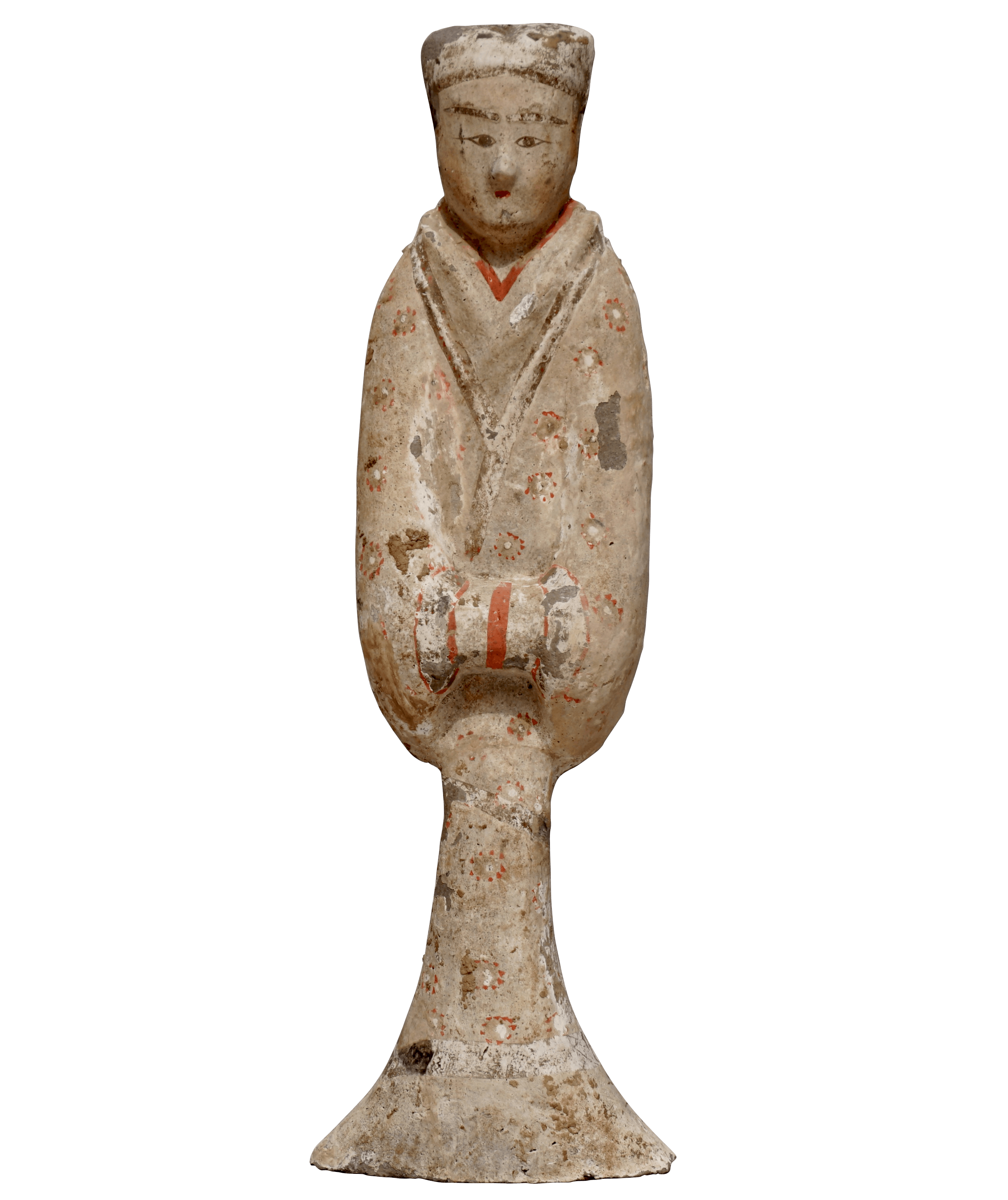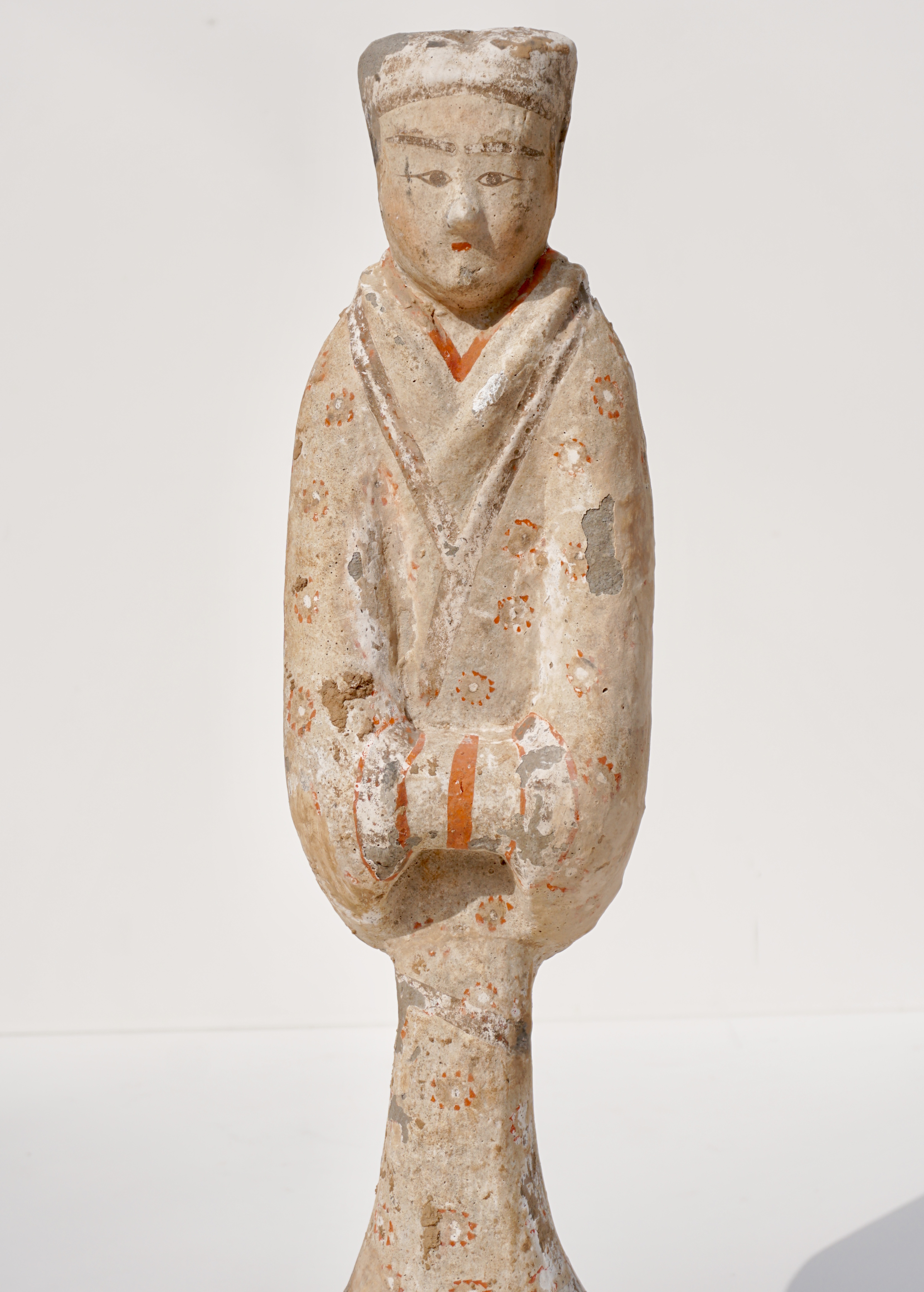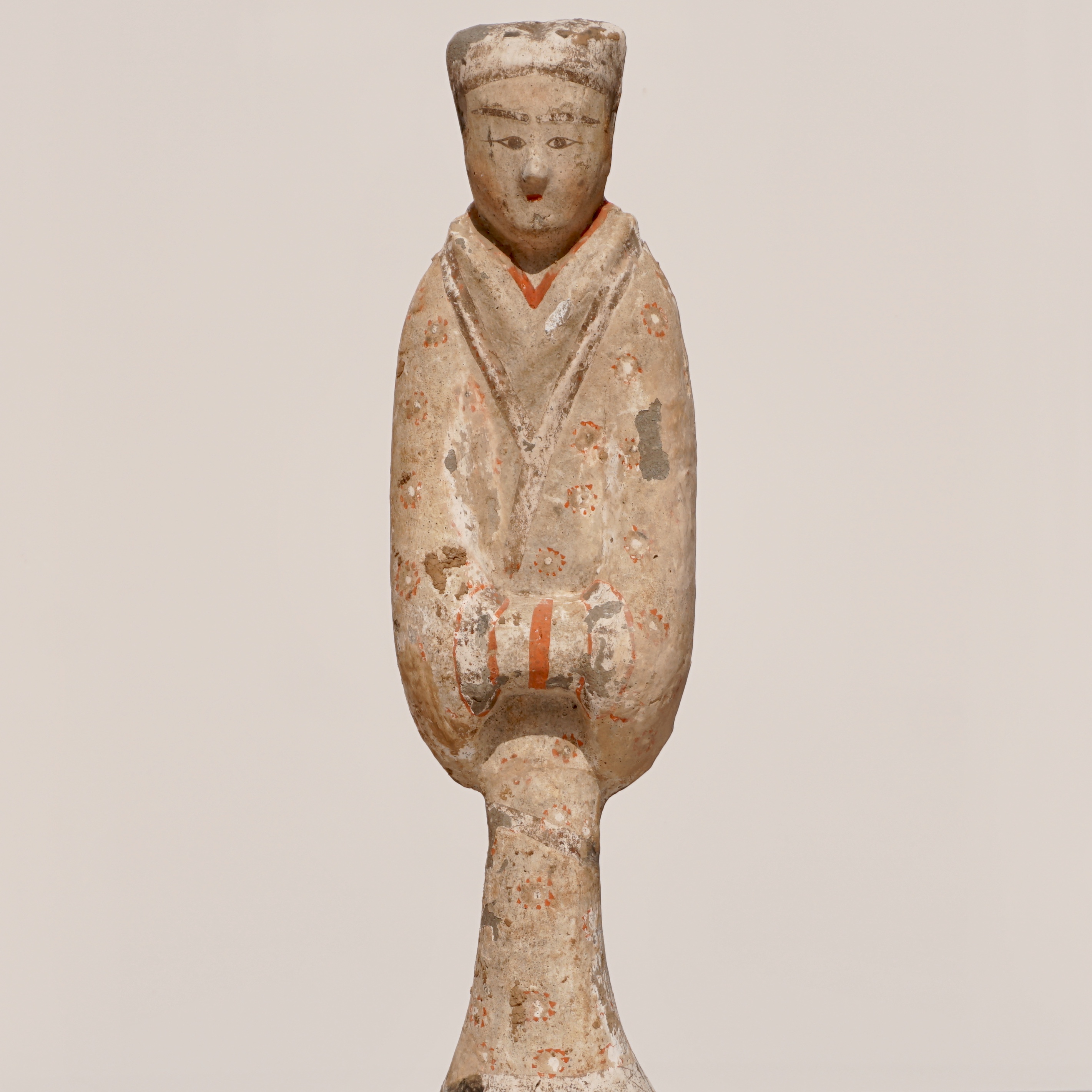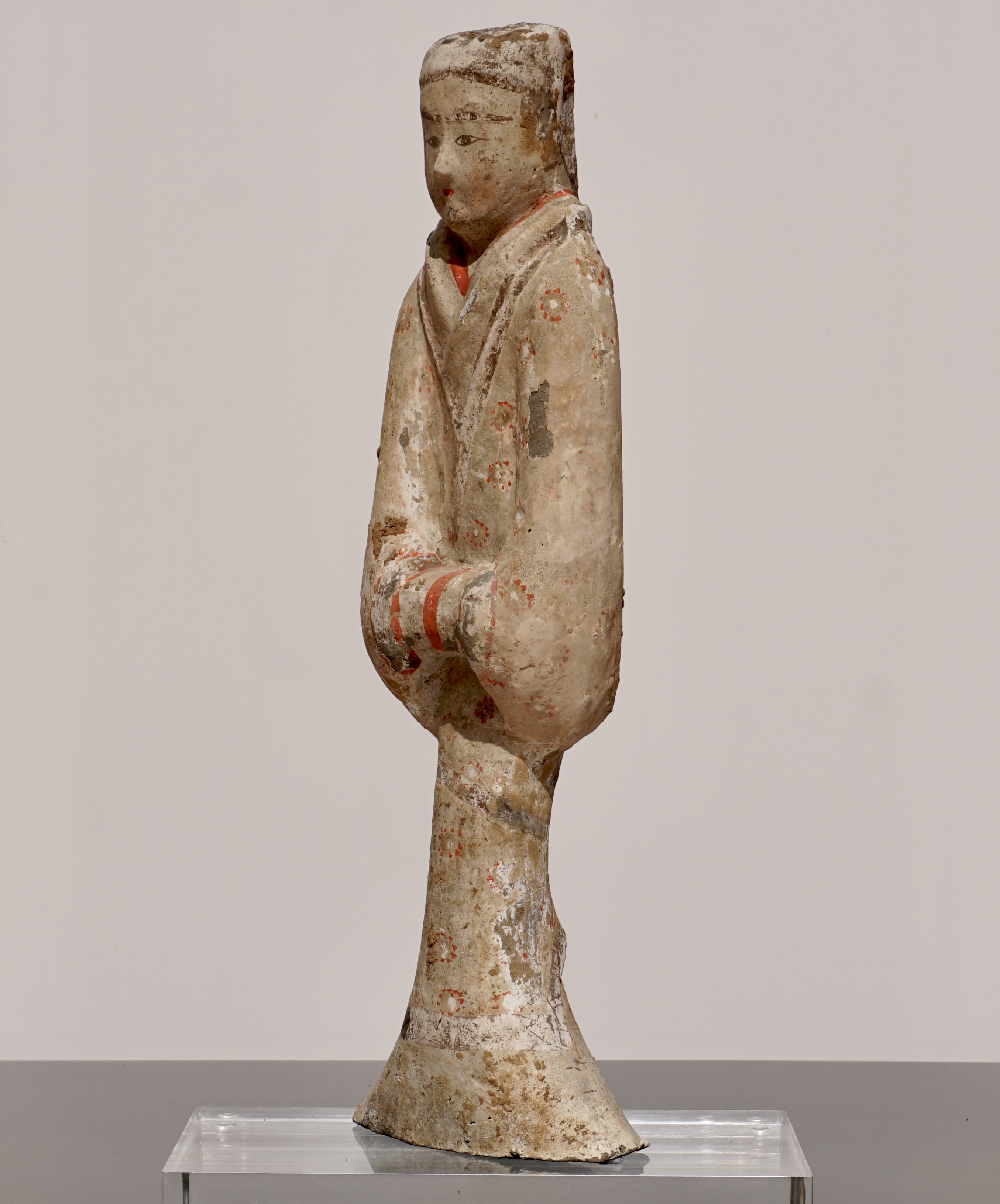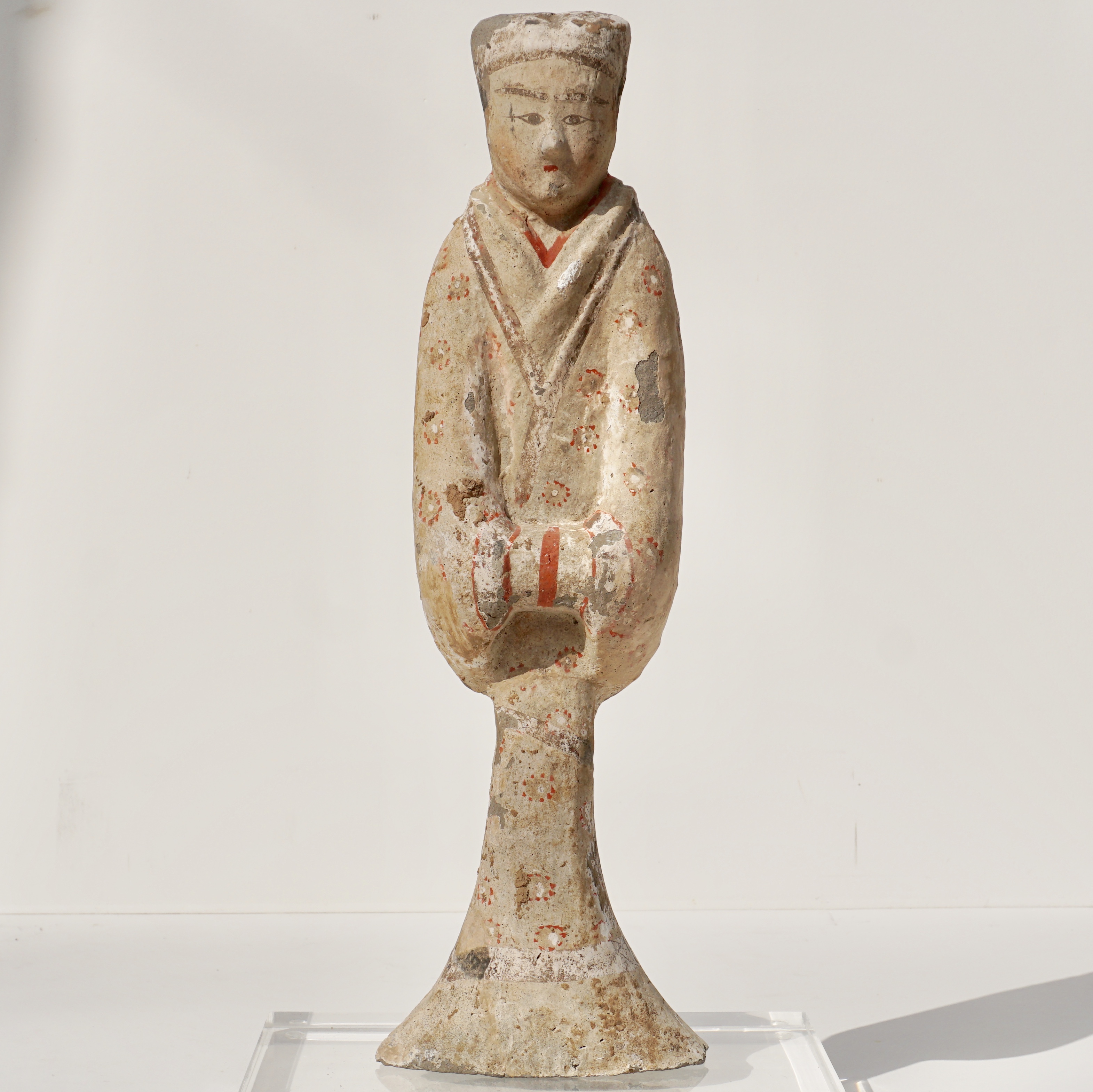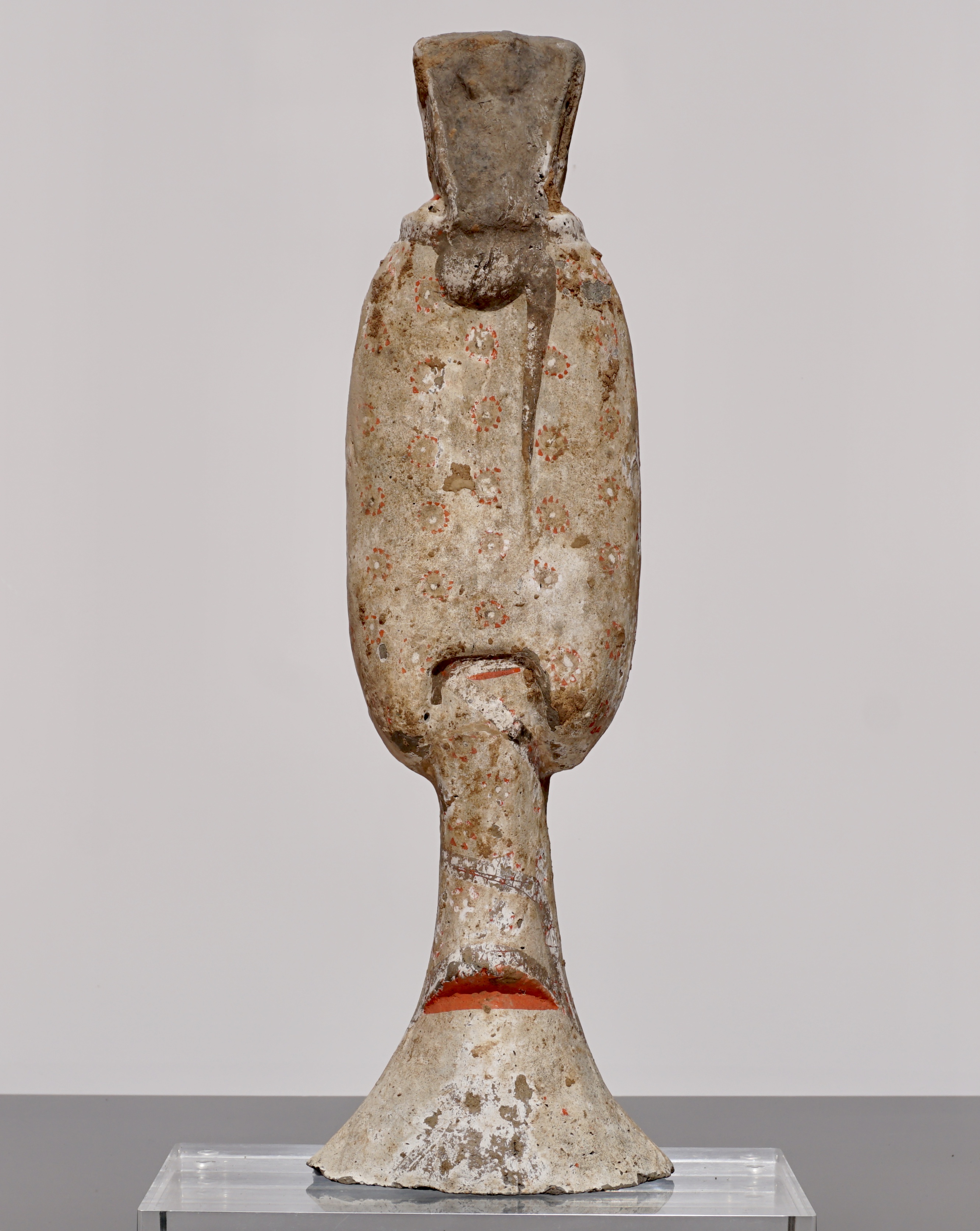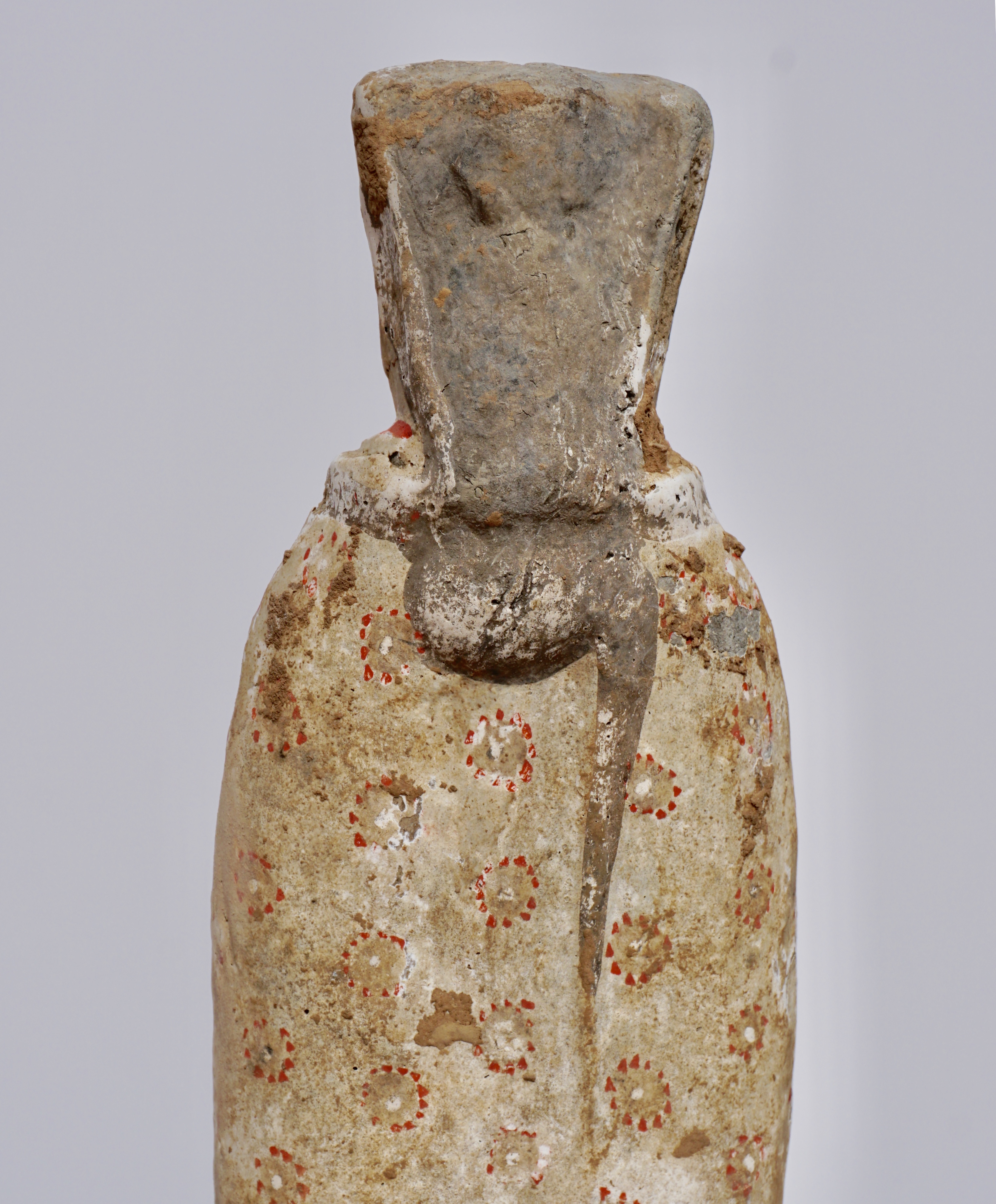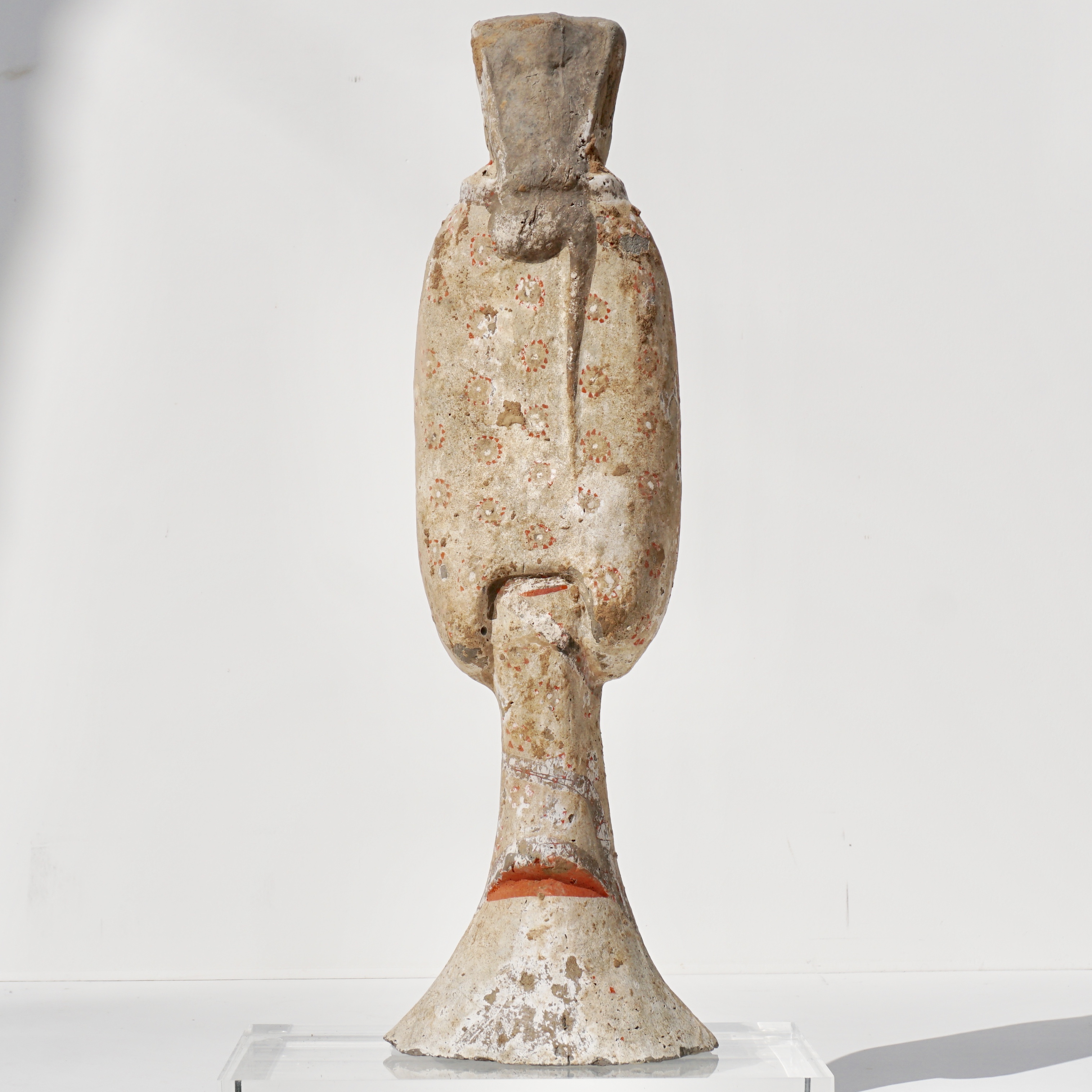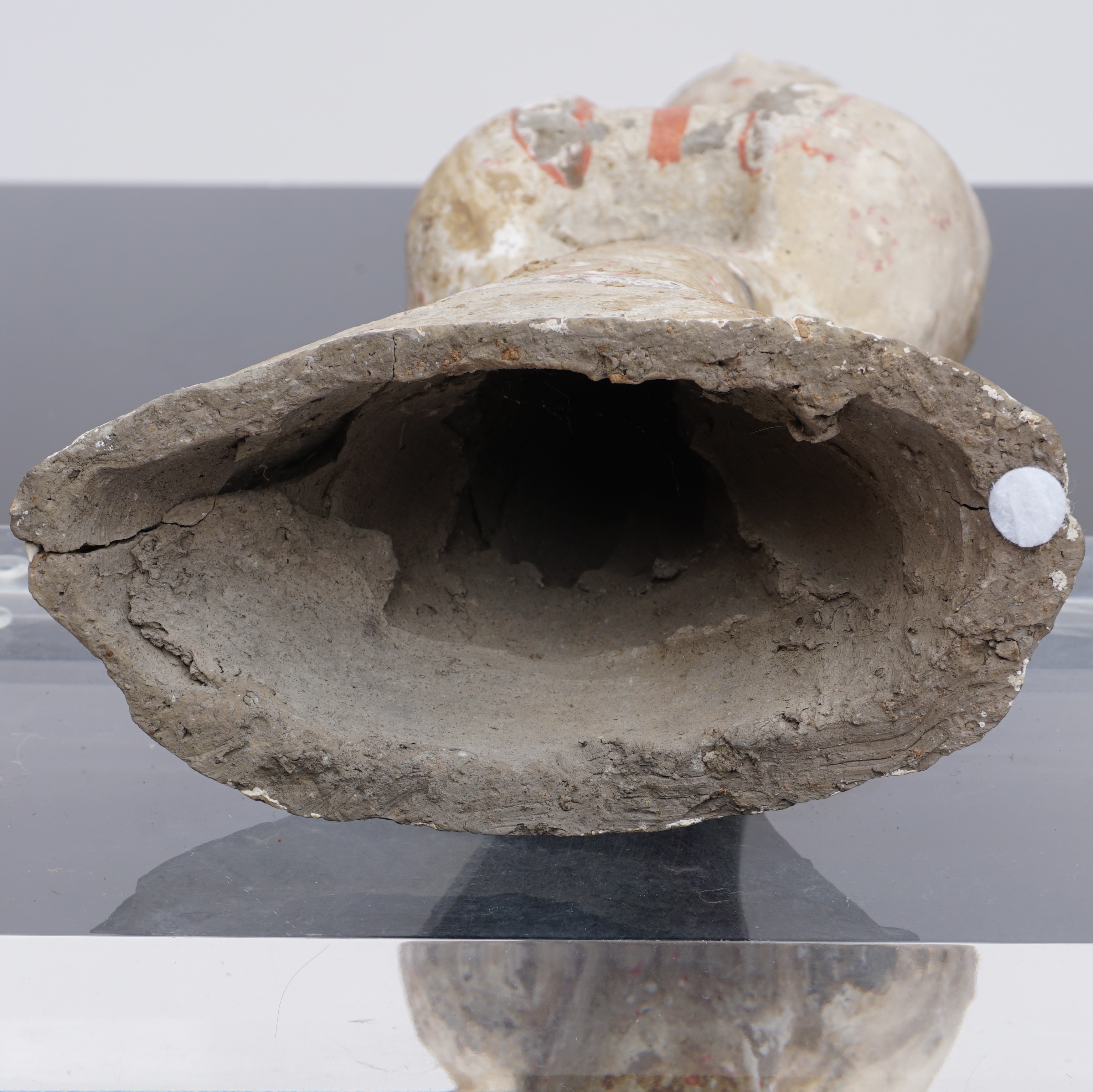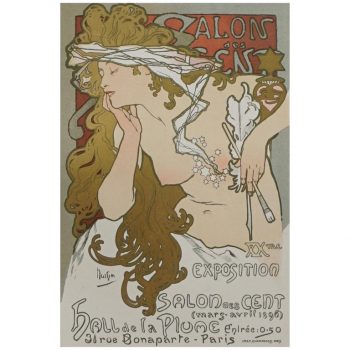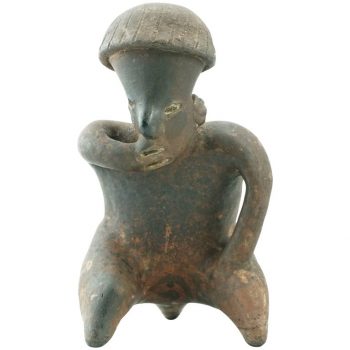Description
A tall Terracotta sculpture of a court lady figure dressed in flowing robe painted in cream with orange flowers and highlights. The face with piercing eyes and long eyelashes and long hair tied in proper fashion of the Han Dynasty. A proportioned 18 Inches tall with a base width of 6 Inches; this statue will make a statement of asian taste that is timeless and 2000 years old at the same time. A plexiglass stand will also accompany this archeological treasure.
This Statue has undergone a Oxford England Thermoluminescence Analysis and tested positive for being fired between 1500-2300 years ago dating it to the Han Dynasty. Paperwork will be included with associated and annotated photo. Photo of TL Test available upon request.
Statue with restorations, chips and paint losses.
Height: 18 Inches (45 cm) Width: 5.9 Inches Depth: 3.25 Inches
Such figures and models and other miniature or non-functional objects are collectively known as ‘mingqi’ (spirit articles) and have been traditionally interpreted as substitutes for the animals and human victims sacrificed during the funeral, as well as surrogates for objects of value placed in the tomb. Yet recent archaeological evidence have highlighted that these objects might have instead constituted an integral part of the strategy to recreate the earthly dwelling of the deceased. The replication of the living world and its constituents within the tomb might have been induced by various ideological factors, including a new religious trend emphasising the separation of the dead from the living and other material manifestations of different philosophical ideas, but also possibly by the effort to reproduce a self-sustaining version of the world- a fictive and efficacious comprehensive replica, made up of both real sacrificed humans and animals (the ‘presented’) and elements such as the terracotta army (the ‘re-presented’).
In ancient China, burials constituted the preferred platform for social aggrandizement and strongly signified the power and status of their builders and occupants; soldiers, concubines or animals, or precious articles in the tomb constituted a symbol of power and reflected the wealth of its occupant. By the Qin period and throughout the Han period, the ability to have them reproduced – hence possessing the aesthetics, cognitive, technological and economic resources to reproduce the world- became a more efficient way of asserting power and status.
References:Yang Shaoneng ed. The Golden Age of Chinese Archaeology, 1999

